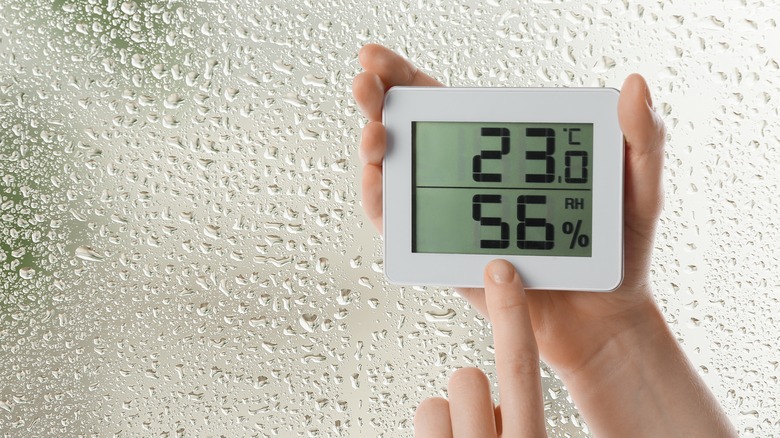What A Hygrometer Is And Why You Might Need One
We may receive a commission on purchases made from links.
Many people run their central AC as soon as they feel even a hint of warmth in the air, but others use this appliance sparingly. One problem with not running the AC when it's hot out is that it might leave the indoor air moisture level too high. This could cause a number of problems, some of which could be hazardous to your health and home. A hygrometer is a device that measures humidity in the air. It can help you determine if you need to take extra measures to adjust the air moisture level in your home.
When there's too much humidity in the air, it can affect your sleep quality, increasing the chances of bacterial and fungal growth. Mold can cause respiratory problems and allergic reactions as well as other health issues if inhaled or touched, and it can damage items in your home, too. On the other hand, excessively dry air can negatively affect your health and home, leaving you seeking ways to increase the humidity level in your home.
To make the best use of your hygrometer, it's important to first know what a healthy indoor relative humidity (RH) level is. The Environmental Protection Agency (EPA) recommends keeping the indoor RH level under 60%, but preferably between 30% and 50%. A hygrometer can sit on a countertop or be nailed to a wall, and it displays the RH percentage of the area where it's placed.
How to determine if you need a hygrometer
Some thermostats measure both air temperature and indoor humidity percentage, including the Honeywell Home Smart Color Thermostat, but many do not. So how can you determine if you need a hygrometer or not? Look for signs of excessive humidity, like a muggy feeling against your skin. Musty or moldy odors, a moist feeling on furniture, and damp, sticky floors are also indicators of high humidity levels in a home. If you notice any of these signs or just want to know the RH level of your home at all times, a hygrometer can be a great purchase.
Even if you're certain that your home's humidity levels aren't too high, you may want to buy this device anyway since they're relatively inexpensive. You can purchase one that also measures the indoor temperature for under $10 on Amazon. Keep in mind that some hygrometers use only the metric system (Celsius), some use only the Imperial system (Fahrenheit), and others allow you to toggle between the two.
Remember, the EPA recommends that you keep your home's relative humidity level between 30% and 60%. Maintaining RH levels in this range helps prevent moisture-related damage to walls, furniture, and floors and humidity-related health problems. A hygrometer measures the relative humidity level in your home, allowing you to determine if you need to humidify or dehumidify.

